IN FOCUS: 'Buying time' - why ChinaŌĆÖs housing prices keep falling a year after big bang stimulus
One year after ChinaŌĆÖs aggressive property stimulus, prices are still falling in most cities - except Shanghai. Analysts explain why.
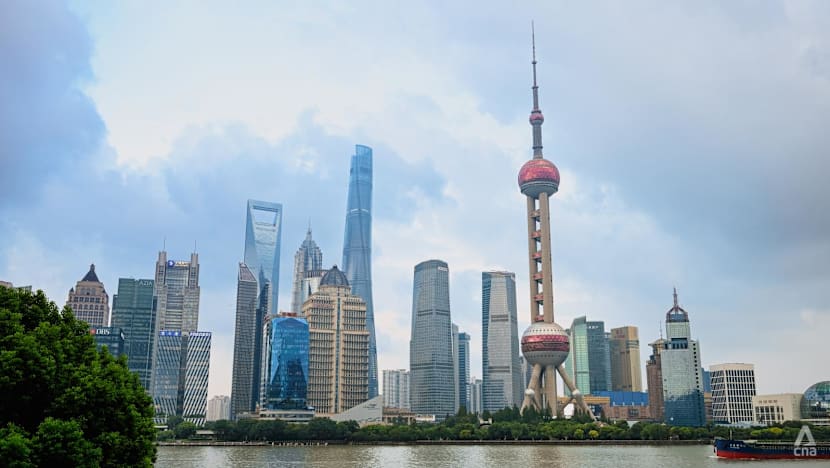
Shanghai skyline with The Bund on Jul 31, 2025. (Photo: ┬ķČ╣/Tan Wen Lin)

This audio is generated by an AI tool.
SHANGHAI: Buying a new apartment in Shanghai these days requires more than just cash - it takes stamina, luck - and sometimes a bit of theatre.
At a recent weekend launch of One Tian An Place, a mid-range project in the well-established Jinyuan area of Minhang, hopeful buyers queued, clutching numbered slips that determined the order they could enter to claim a unit before the red ŌĆ£soldŌĆØ tags went up.
One successful buyer, who drew a lottery number well past 60, described the process as ŌĆ£a bit nerve-wrackingŌĆØ - but ultimately worth it.
ŌĆ£The (unit) floor was a bit lower than we expected but it doesnŌĆÖt really matter as long as it doesnŌĆÖt affect the lighting,ŌĆØ he wrote on Xiaohongshu on Sep 7, under the handle Zaoshuizaoqiba.
ŌĆ£Land prices keep rising,ŌĆØ he added. ŌĆ£We were really worried we might not be able to afford anything later. Since (the unit) was still under 100,000 yuan (US$14,042) per square metre, we just wanted to get on board quickly.ŌĆØ
ŌĆ£The earlier you buy, the more peace of mind you have.ŌĆØ
By the end of the day, sales agents reported around 90 per cent of units had been sold.
But for 33-year-old Andree Wu, also looking to buy in Shanghai, the search has been less successful.
Living in Putuo District with her husband, child and dog, she began house-hunting in February after giving birth, hoping to find a larger three to four-bedroom apartment.
Months later, she is still looking - even after raising her budget from 15 million yuan to 25 million yuan, opening the door to more choices.
ŌĆ£There are only houses that excel in one aspect but are very poor in another,ŌĆØ she told ┬ķČ╣.
ŌĆ£The house we really want just doesnŌĆÖt exist.ŌĆØ
Still, Wu admitted the recent policy support played a role in stretching her budget.
ŌĆ£The lower mortgage rates made me more willing to raise my budget ... Lower rates have reduced the pressure somewhat,ŌĆØ she said.
Both cases reflect the buyer enthusiasm fuelling ShanghaiŌĆÖs property market, where high-spec central projects are snapped up almost immediately.
On Jul 2, financial outlet Yicai reported that five mid- to high-end projects sold out on their first day.
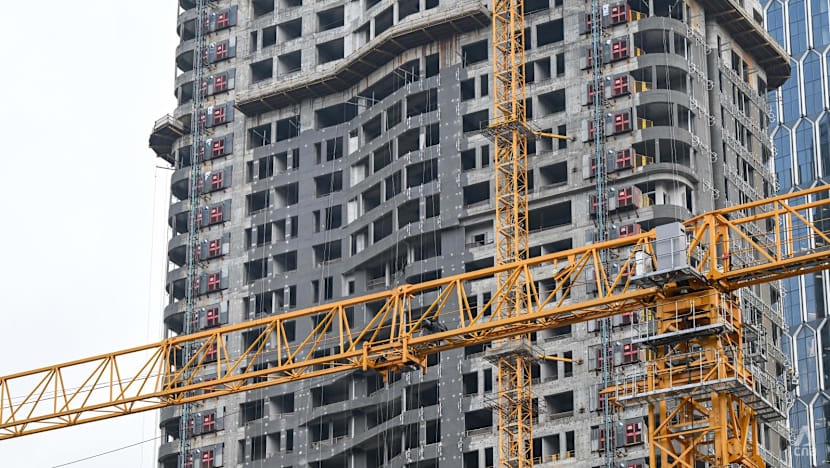
But these frenzied sell-outs mask a deeper malaise.
Nearly a year after China launched its most aggressive property stimulus in decades, the housing market remains sharply bifurcated.
Pockets of buoyancy endure in luxury enclaves of Shanghai and a handful of top-tier cities.
Elsewhere, demand is anaemic.
Average new-home prices continue to edge down while land sales in fourth- and fifth-tier cities have plunged to their lowest levels since 2011.
ChinaŌĆÖs property market, once the countryŌĆÖs growth engine, now runs on two tracks - roaring at the top, stalling everywhere else.
The big bang package may not restore the property boom - only blunt the pain, analysts argue.
BIG BANG MEASURES - AND THEIR LIMITS
The September 2024 stimulus package was a sweeping attempt to turn the tide.
Beijing cut existing mortgage rates by 50 basis points, delivering savings to an estimated 50 million households.
Down-payments were standardised at 15 per cent for first and second homes.
A 300 billion yuan affordable housing re-lending facility was fully funded, while other measures ranged from "white list" financing to revitalising idle land and easing purchase curbs in mega-cities.
The measures, announced at a State Council press conference on Sep 24 last year, were aimed at clearing unsold inventory, reviving housing demand, and stabilising prices, according to the governmentŌĆÖs official policy summary.
Yet the backlog keeps growing.
According to data released by ChinaŌĆÖs National Bureau of Statistics (NBS), the number of unsold new homes rose to 405 million square metres in August 2025, from 382 million square metres in July 2024.
ŌĆ£My sense is that (the measures) have almost zero impact (on moving the property market),ŌĆØ said Lin Han-Shen, China country director at The Asia Group.
ŌĆ£If I was to look at what the primary driver is to drive more purchases of property, it's if the properties rise in price.ŌĆØ
ŌĆ£The Chinese are not deep value investors,ŌĆØ Lin said. ŌĆ£They do not buy when prices are low. They tend to buy when prices are going up.ŌĆØ
Wang Dan, China director at Eurasia Group, agreed. ŌĆ£There was not a single policy that has achieved any of the effects to reverse the housing cycle,ŌĆØ she told ┬ķČ╣.
ŌĆ£What the policies have been doing so far is basically to try to stimulate more of a demand among potential homebuyers,ŌĆØ she added.
ŌĆ£Housing prices are still going down - thatŌĆÖs why it didnŌĆÖt work.ŌĆØ
Except for one city: Shanghai.
Standing out from the pack, the city posted a 5.9 per cent year-on-year increase in new-home prices in August, according to NBS data released on Sep 15.
Despite that, average prices across ChinaŌĆÖs four top-tier cities - Beijing, Shanghai, Guangzhou and Shenzhen - still fell 0.9 per cent from a year earlier, as declines in the other three outweighed ShanghaiŌĆÖs gains.
In second-tier cities, prices fell 2.4 per cent, while third-tier cities saw a 3.7 per cent drop.
Analysts pointed out the misalignment between market hopes and BeijingŌĆÖs intentions.
ŌĆ£There is a misperception in the market that the government wants the property market to recover. That is not true,ŌĆØ Lin explained.
ŌĆ£Certainly, the government does not want property to make up 30 per cent of GDP the way it used to,ŌĆØ Lin added.
ŌĆ£So if that's the definition of recovery, that is not what the government desires. What it does desire is a stabilisation.ŌĆØ
Wang echoed the point, saying the central government ŌĆ£doesn't believe that housing should be the main growth engine for China anymoreŌĆØ.
Citing how the Chinese leadership under President Xi Jinping believes the new engine should be productivity, Wang said: ŌĆ£The resources and the policy support are basically in those high-tech industries, emerging industries, manufacturing.ŌĆØ
China is therefore careful not to inflate another property bubble, instead focusing its measures on cushioning a drawn-out correction, analysts noted.
Lin put it this way: ŌĆ£The government knows three things have to happen. Market prices have to go down - but not too quickly. Developers have to consolidate - but not too quickly. Banks have to write off nonperforming loans - but not too quickly. So it's a matter of buying time right now in the sector.ŌĆØ
NATIONAL PICTURE: SLUMP BEYOND TIER-ONE CITIES
ŌĆ£(The pricing) in tier-one (cities) is generally more resilient than tier-two and tier-three,ŌĆØ said Sam Xie, head of research for China at CBRE.
But even ChinaŌĆÖs largest cities are not immune.
ŌĆ£More people are selling in Beijing than buying. It actually would drag the housing prices down even faster,ŌĆØ said Wang.
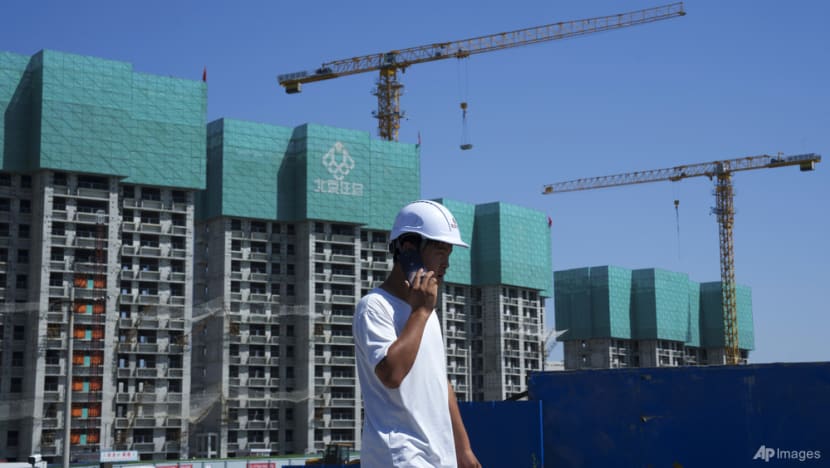
Outside a few policy-induced bursts, most of ChinaŌĆÖs market remains in the doldrums.
Goldman Sachs in June estimated a cumulative 20 per cent drop in home prices from peak to trough - and expects another 10 per cent fall before stabilisation in 2027.
Investment has also cooled.
Total real-estate development between January and July reached 5.36 trillion yuan, with residential investment at 4.12 trillion yuan - far below the 6.09 trillion yuan and 4.62 trillion yuan recorded in the same period of 2024, and below the earlier highs, when real estate development investment peaked at 14.7 trillion yuan in 2021.
China's land market, once a vital fiscal engine for local governments, has nearly ground to a halt in lower-tier cities.
Land transaction values hit decade-lows in third- to fifth-tier cities, the Financial Times reported, citing Wind data.
In the first half of 2025, fourth-tier cities generated just 87 billion yuan in land revenue, while fifth-tier cities brought in 51 billion yuan.
By contrast, state-owned developers focused on Beijing, Shanghai, Guangzhou and Shenzhen, helping push first-tier land sales up about 30 per cent in value from a year earlier, according to the Financial Times.
Amid the gloom, some buyers are returning not because of stimulus, but because prices have finally fallen within reach.
In Beijing, 30-year-old office worker Olivia Zhang and her husband bought their first home - a second-hand two-bedroom unit of about 60 to 70 square metres - in July, after prices fell to what they considered ŌĆ£reasonableŌĆØ.
ŌĆ£Even though our salaries are higher now than a few years ago, the prices back then still felt unaffordable and not worth it. The price drop definitely encouraged us to buy,ŌĆØ Zhang said.
Their modest flat near Sihuidong station, between the Fourth and Fifth Ring Roads, cost 3 to 4 million yuan.
Buying second-hand was the only realistic choice.
ŌĆ£There are basically no new apartments (within the Fifth Ring) anymore,ŌĆØ Zhang said. New builds further out would have meant worse commutes.
ŌĆ£Since weŌĆÖre young and both working, we prioritised a good location.ŌĆØ
ItŌĆÖs the kind of ŌĆ£old, small and shabbyŌĆØ place many end up buying within this budget.
Purchased as a marital home rather than an investment, Zhang added: ŌĆ£Whether prices go up or down doesnŌĆÖt matter much to us.ŌĆØ
"WeŌĆÖll keep living here, and we donŌĆÖt plan to sell.ŌĆØ
While homeownership remains a prerequisite for marriage in many circles, expectations are evolving.
ŌĆ£With the younger generation ŌĆ” thereŌĆÖs a higher willingness to rent. ItŌĆÖs cheaper and theyŌĆÖre more mobile,ŌĆØ said Wang from Eurasia Group.
ŌĆ£They have to change up a lot,ŌĆØ she added. ŌĆ£So between different cities, itŌĆÖs just easier if they rent homes.ŌĆØ
Yet the social norm is sticky. ŌĆ£If you want to get married, buying a home is still a robust requirement, especially from the womenŌĆÖs family,ŌĆØ she added.
As young people delay marriage, ŌĆ£the demand for housing is also later, and that is another downward pressure.ŌĆØ
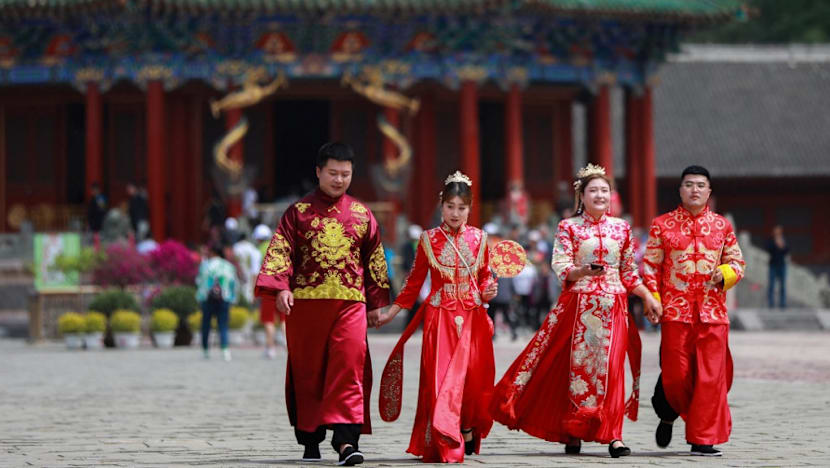
Meanwhile, persistent oversupply continues to weigh on the market.
Developers are sitting on vast inventories, with Goldman Sachs estimating 30 trillion yuan worth of unsold homes.
New-home demand is projected to remain 75 per cent below its 2017 peak for years to come.
Even official efforts to clear the stock - such as through purchases by state-owned firms and local governments - have seen tepid results.
ŌĆ£No one is going to buy an overvalued asset, and everybody knows that those assets are overvalued,ŌĆØ Wang said. ŌĆ£So they're not going to enter the market at this point.ŌĆØ
Lin from The Asia Group, attributes much of the inertia to a mismatch: ŌĆ£The inventory buildup versus the actual demand, that mismatch gap is going to continue to get wider.ŌĆØ
CBREŌĆÖs Xie noted that developers remain highly cautious in the current environment.
ŌĆ£They are primarily focused on land banking in tier-one and upper tier-two cities,ŌĆØ he said. ŌĆ£For lower-tier cities, the top priority is ensuring that overdue projects are completed and delivered.ŌĆØ
The divide is stark.
According to data, nationwide investment in residential development declined by 10.9 per cent year-on-year during the first seven months of 2025, while investment in Shanghai grew by 3.3 per cent over the same period.
Lin offered a telling example.
A personal trainer he knows - a young man with modest income - said he owned five apartments in Anhui, accumulated through a mix of inheritance and purchases over the years.
Yet he admitted he could never trade up into a city like Shanghai, even if he sold all five.
To Lin, this was symptomatic of a deeper glut in lower-tier cities, where demographic inheritance and limited mobility have locked properties into limbo.
ŌĆ£You are certainly seeing a tale of two cities,ŌĆØ he said - one of excess and stagnation in the hinterlands, and one of cautious recovery in wealthier urban cores.
In some places, prices barely matter - because homes simply arenŌĆÖt changing hands.
ŌĆ£You donŌĆÖt pay attention to prices anymore,ŌĆØ said Lin. ŌĆ£ItŌĆÖs just that the volume of transactions is frozen.ŌĆØ
While no second-tier city is experiencing anything close to a rebound, Wang noted that some are benefiting modestly from demographic shifts.
ŌĆ£Some cities like Chengdu and Changsha are attracting more of a reverse migration,ŌĆØ she said. ŌĆ£because many people, if they lose their jobs in Beijing and Shanghai, which was the case in the past few years, then they would return to some vibrant city in central China.ŌĆØ
ŌĆ£There is some support because of the population inflow for the local housing market (in cities experiencing reverse migration),ŌĆØ she said.
ŌĆ£But it's not enough to really drive up housing prices simply because the supply is too high.ŌĆØ
OUTLIER CITY
If ChinaŌĆÖs market is still groping for a bottom, Shanghai, at least parts of it, has found a way to float.
Despite national price declines, buyer enthusiasm has swept across several well-located and high-end developments.
Especially popular are centrally located luxury towers and suburban homes built by trusted developers.
In both cases, tight supply and a deep pool of affluent local buyers are fuelling the frenzy.
That includes Kangding Garden in JingŌĆÖan District, which drew WuŌĆÖs attention.
Priced around 168,000 yuan per square metre, she joined the buyer lottery for the projectŌĆÖs third-phase sales - without success.
ŌĆ£For that project, apart from the price, I thought there were no drawbacks,ŌĆØ she said.
ŌĆ£If it completely meets my needs ŌĆ” even if I buy at a higher price, I donŌĆÖt mind. I just treat that extra cost as consumption.ŌĆØ
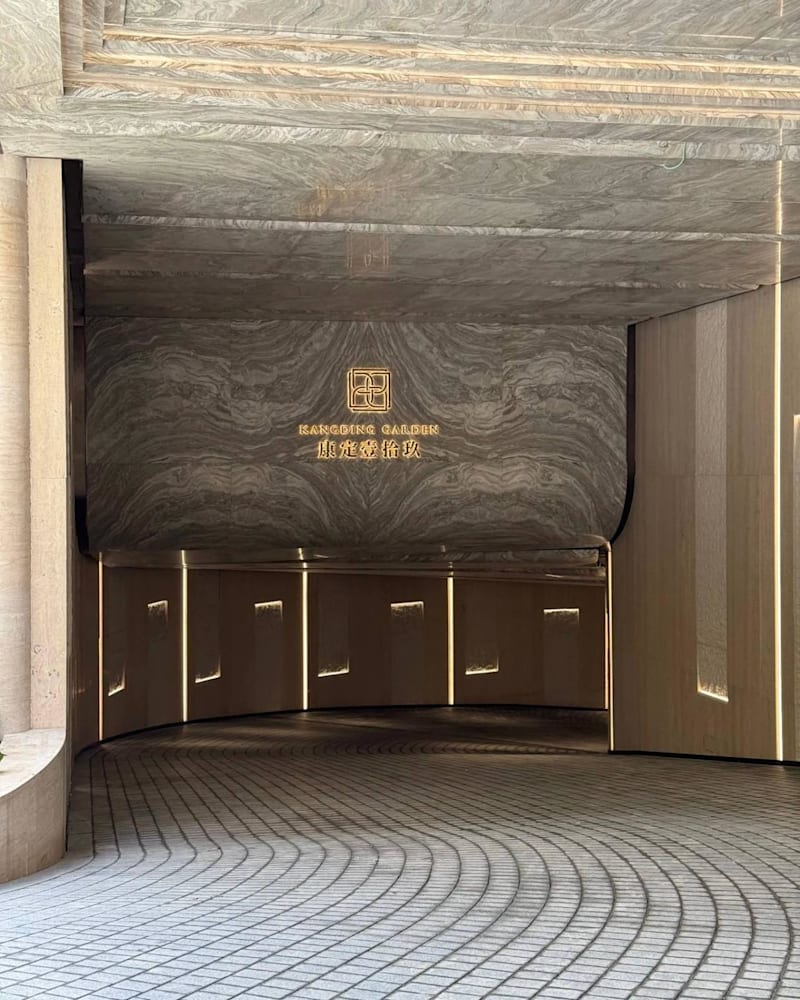
Recent policy shifts have also fanned momentum.
In late August, Shanghai authorities scrapped per-household purchase limits outside the Outer Ring Road, where more than two-thirds of the cityŌĆÖs housing stock is located.
Residents can now buy an unlimited number of flats in these zones, up from a cap of two.
Mortgage rates for second homes were cut to 3.05 per cent, matching first-home rates for the first time.
Restrictions on non-locals were loosened too: since late 2024, buyers from other provinces need only 12 months of tax history in Shanghai, down from three years.
Yet ShanghaiŌĆÖs resilience is not evidence of a broad-based recovery.
ŌĆ£No, I donŌĆÖt think so,ŌĆØ said Wang, when asked if this rebound might signal a national trend.
ŌĆ£Policymakers know that Shanghai is a different market ŌĆ” It is very lucky that people still view it as good, investable assets. But in the majority of China, this is not the case."
"So Shanghai's market is fundamentally different from the rest of the country,ŌĆØ Wang said.
ŌĆ£It is a safe asset.ŌĆØ
After four years of declining home prices, she explained, many Chinese believe the national market has yet to reach bottom - and are unwilling to buy into an overvalued asset without clear upside.
ŌĆ£Right now, the stock market is performing really well. Whoever entered the market since last September has made money,ŌĆØ Wang said.
ŌĆ£But if people have put money in housing as investment, then most people wouldn't be able to make any money, or they will make a big loss.ŌĆØ
In contrast, she said, certain districts in Shanghai have bucked the trend.
ŌĆ£Since 2022 ŌĆ” the prices have even gone up,ŌĆØ she noted. ŌĆ£So itŌĆÖs considered more as an investable asset rather than a place to live.ŌĆØ
Lin, at The Asia Group, attributed ShanghaiŌĆÖs divergence to structural forces.
ŌĆ£Rich people will always have capital to invest. And because of capital controls, it's not easy to go outbound,ŌĆØ he said.
ŌĆ£Shanghai has the deepest pool of capital in China with such a concentration of the well-off. If they have to put their money somewhere, I can see some of it coming back into property.ŌĆØ
Even within Shanghai, however, this upturn is narrow and uneven.
Lin described ŌĆ£a much humbler aspirationŌĆØ among ordinary households: ŌĆ£If the mass market is very concerned about prices going down for their property, then ŌĆ” we're going to see much more modest consumption habits going forward.ŌĆØ
THE RIPPLE EFFECT - WHY IT MATTERS
The weakness in China's property market is more than a drag on GDP - it carries social consequences.
For years, housing was a major social anchor - a prerequisite for marriage, a store of family wealth, a trigger for big-ticket consumption. Today, those assumptions are fraying.
Lin puts it down to a generational shift. ŌĆ£When I look at my students, their consumption preferences are quite a bit different than when I first came (to China) 20 years ago,ŌĆØ he said.
ŌĆ£They seem to aspire to experiential spending. And they seem to be less concerned in the accumulation of assets or goods, including property.ŌĆØ
Part of the reason, he suggests, is confidence they will eventually inherit property.
ŌĆ£If that is the case ŌĆ” where people are quite comfortable (and doing) experiential spending, and waiting for their property inheritances, itŌĆÖs not a good sign for the outlook for future developers.ŌĆØ
Others are simply locked out. Even with home prices falling, many young Chinese still canŌĆÖt afford to buy.
ŌĆ£The gap between purchasing power, the multiple of your salary, the number of years you had to save up to buy a property ŌĆ” itŌĆÖs just still too wide for the vast majority of the younger generation,ŌĆØ Lin said.
Wang of Eurasia Group noted how consumption has changed. ŌĆ£Before 2022, the biggest portion of the household consumption is tied to apartments,ŌĆØ she said.
ŌĆ£So for an average Chinese family, if they didn't buy a new apartment, there would be no big item consumption. Like the aircon, fridge, cars - these are tied with housing and also decoration.ŌĆØ
One apartment purchase, she noted, could trigger half a million yuan in related spending. Now, that ecosystem has atrophied.
ŌĆ£After the housing downturn, after 2022 ... (household consumption) is mostly just (on) daily necessities, consumer goods, more services, more cultural goods, and tourism,ŌĆØ she said.
ŌĆ£You can (take) 2,000 trips, but still it doesn't compare to buying one home and instead (spending) a million on decoration.ŌĆØ
Related:
Among the wealthy, trust in property as a ŌĆ£safeŌĆØ asset has splintered.
ŌĆ£Those that were able to get into the property market earlier ŌĆ” theyŌĆÖre in a better capacity to enjoy the pleasures of their wealth through buying other luxury properties,ŌĆØ Lin said.
For them, purchases are driven by lifestyle aspirations.
ŌĆ£When you buy a property, it could be for a property to act as your pension. But I don't think that's the main driver for the richer class ŌĆ” for them, it's still very much a quality of life, aspiration.ŌĆØ
For the vast majority, housing is no longer the cornerstone of financial security it once was, he said, adding that property is now just ŌĆ£one potential asset class among othersŌĆØ alongside gold and government bonds.
Meanwhile, local-government finances have weakened dramatically.
With land-sale revenue collapsing in lower-tier cities, budget gaps are widening.
ŌĆ£Every city, every county, every province has a sizeable budget gap that can no longer be filled by land sales,ŌĆØ Lin warned.
ŌĆ£And for the most part, issuing more debt is problematic as well. So they're going to have more austerity.ŌĆØ
The global knock-on effects are still unfolding.
Fears of a Lehman-style crisis have faded, analysts noted, but a sluggish Chinese housing market will continue to ripple through global demand, commodity prices, and investor confidence.
"(The property sector) is going to continue to be a drag on the economy for at least the next five-plus years or so," said Lin.
"But as long as it's not a drag enough (and still) allow a transition to a technology-driven economy, thatŌĆÖs okay."
ŌĆ£The government will do what it needs to just stabilise (the property market).ŌĆØ
That future, he suggests, may lie not in another property supercycle, but in a rotation of capital into tech, green energy and industrial upgrades.
ŌĆ£WeŌĆÖre starting to see some signals from the trigger of ŌĆ” technology driving the stock market,ŌĆØ Lin said.
ŌĆ£If ChinaŌĆÖs stock market continues to steadily go up ŌĆ” that will boost the wealth effect, and maybe help compensate and drive consumer spending.ŌĆØ
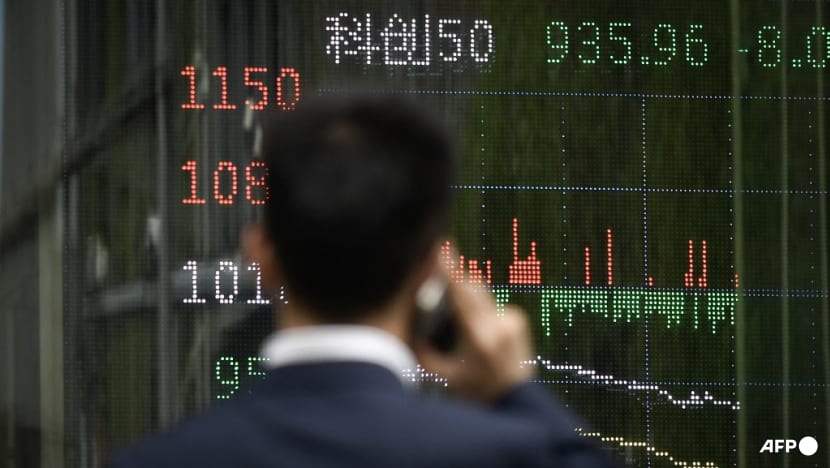
WAITING FOR THE BOTTOM
Few expect China to return to the old playbook.
Analysts suggest the current approach is longer-term and deliberately cautious - not to re-inflate a bubble but to manage a drawn-out adjustment.
Wang believes the sectorŌĆÖs role is being rewritten.
ŌĆ£The future of Chinese housing, I believe, is permanently lower prices than before,ŌĆØ she said.
ŌĆ£More homes need to be built in the future, but it wouldn't be built in a similar fashion as before. A lot of the construction will be done by the state sector, by state-owned enterprises, instead of private businesses.ŌĆØ
With 2025 marking the final year of both the 14th Five-Year Plan and the ŌĆ£Made in China 2025ŌĆØ strategy, attention is turning to the Fourth Plenum expected in October - where senior leaders may clarify BeijingŌĆÖs long-term posture.
And observers do not expect a dramatic shift.
ŌĆ£What (the government) does desire is a stabilisation,ŌĆØ Lin said.
ŌĆ£ItŌĆÖs a much more modest goal, but the market has not understood that yet.ŌĆØ
ŌĆ£They're still looking for some form of bailout, still looking for some major form of stimulus ŌĆ” and that's not likely around the corner.ŌĆØ
ŌĆ£I suspect in the upcoming plenum, people will be disappointed as well.ŌĆØ
For many families, policy comes second to something deeper: the belief that a home anchors their future.
Zhang in Beijing said: ŌĆ£My husband, whoŌĆÖs from Hebei, has always rented here and lacked a sense of belonging.ŌĆØ
ŌĆ£Buying a place makes him feel he finally has a home.ŌĆØ
Back in Shanghai, Wu has eased off the panic.
ŌĆ£Before, I thought housing prices would keep rising, so I felt very anxious, like if I didnŌĆÖt buy now IŌĆÖd never be able to afford it,ŌĆØ she said.
ŌĆ£But now I feel the market will likely remain flat for a while, or perhaps just oscillate within a narrow range. So IŌĆÖm not so anxious anymore.ŌĆØ
ŌĆ£Within two or three years, if I come across the right opportunity, I can just buy. No need to rush for now.ŌĆØ


















